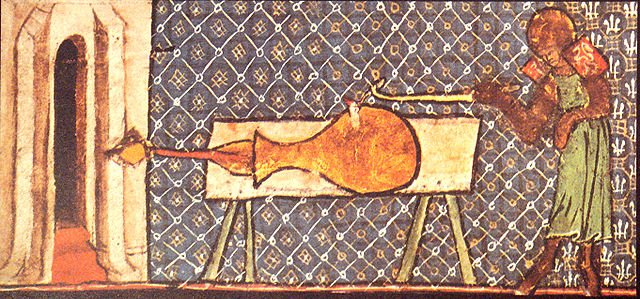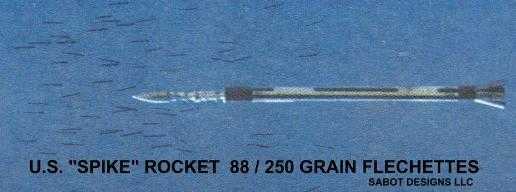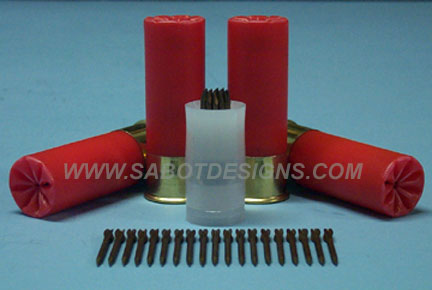
FOR LIFE, LIBERTY, AND PERFORATION OF ALL WHO THREATEN IT
SINCE 1998 OVER 3 MILLION FLECHETTES MADE
CELEBRATING OUR 25TH ANNIVERSARY - THANKS FOR YOUR SUPPORT
HISTORICAL BACKGROUND

HISTORY AND TECHNICAL ASPECTS OF FLECHETTES AND FLECHETTE AMMUNITION
FLECHETTES
Flechettes are fin stabilized steel projectiles similar in appearance to arrows which have a long history of munitions use. The first projectiles used in early gun systems from the 1300's were flechettes1, they were hand wrought of iron and wrapped with a leather sabot obturating the bore. They exhibited high lethality but fell from early use due to the complexity and expense of manufacture in pre-industrial society, being generally replaced by easily made stone cannon balls.

Flechettes again came into use during the first large scale technological war of 1914-1918, World War 1. With the advent of the industrial revolution and modern metallurgy mass production of flechette projectiles could be cost effectively attained. The typical use of flechettes were as antipersonnel projectiles dropped from aircraft over enemy lines of defence and troop concentration. The flechettes were 4 inches long weighing 1 1/2 to 2 ounces and capable of penetrating a combatant from head to foot and creating an instantly incapacitating wound. Flechettes were also used as the projectile of choice in the first electromagnetic rail guns2 that were used as artillery by the French against the Germans.

Late 20th century interest in flechette projectiles was rekindled by the first cold war conflict of 1950-1953, the Korean War. The conflict was characterized by the Chinese army tactic of human wave attacks against U.S. lines of defence, and enemy personnel ratios of over 10 to 1. Fundamental thinking about the use of single and multiple projectiles against personnel changed in conjunction with studies of actual combat requirements and effectiveness. This began the development of flechettes for use in single and multiple projectile delivery systems for small arms and antipersonnel (APERS) canister use. A multiplicity of systems were developed for both criteria3, most are currently in use and new systems are under development.

FLECHETTE PERFORMANCE
Flechettes have a performance criteria very different from the conventional rifle bullet projectile. Typical modern flechettes are small light weight steel projectiles4 and are fired at muzzle velocities from 1250 fps. to 4500 fps. Because of the flechettes light weight it is dependent on velocity to retain sufficient kinetic energy to produce a casualty5. The velocity lost to air resistance is generally 375 fps. per 100 Meters of flight.

Flechettes are not generally rotated to stabilize their flight performance, but use the fin area to adjust the relationship of the center of pressure and center of mass to achieve level flight. This adjustment is called yaw, and the amount of yaw has a direct effect on flechette performance. Yaw reduces the flechette's flight velocity which decreases kinetic energy and increases dispersion of the flechettes flight from it's intended level flight. This creates an accuracy circular error probability (CEP) around the intended point of impact, and a casualty radius perpendicular to the flight path extending from that point. The flechettes dispersion, accuracy CEP, and casualty radius is directly influenced by the amount of yaw the flechette experiences during flight.
Flechette terminal performance differ from conventional rifle bullets. Bullets are mass dependent for kinetic energy and tend to stay in motion on target impact due to insufficient resistance to the projectile's momentum, reducing the total energy transfed for casualty production. Flechettes have a very small mass and are velocity dependent for kinetic energy and upon target impact transfer all their available energy6 to casualty production. The flechette's long body and small cross section looses rigidity upon target impact and bends into a hook as kinetic energy is transferred, often breaking off the fin portion creating an additional wound tract.

12 GAUGE FLECHETTE SABOT PERFORMANCE
The 12 gauge flechette sabot was developed to address the existing deficiencies in flechette munitions for shotguns and APERS applications. Historically, firing multiple flechettes from shotguns relied upon munitions which are complicated to produce, subject to excessive yaw upon firing, and exhibit low firing velocities. The flechette sabot reduces the complexity of assembling a flechette munition. The assembled polymer sabot holds the flechette projectiles in a concentric cluster coaxial with the weapon system's bore. The sabot assembly is easily inserted into the cartridge case of the munition with no handling whatsoever of the individual flechettes.
The sabot on firing maintains a concentric coaxial cluster eliminating the detrimental internal ballistic effects of flechette bending, cluster and bore axial mis-alignment, or flechettes contacting and scoring the weapons bore. Exiting the weapons muzzle the sabot protects the flechettes from the effect of the firings emergent gases, greatly reducing the flechette's level of initial yaw upon release. Because the sabot reduces initial yaw the flechette cluster only expands to the natural dispersion pattern created by the mach wave interaction of the individual flechettes. This dispersion reduction yields an accuracy CEP and casualty radius 50 to 70 percent smaller than previous flechette munitions. The commensurately higher target impact velocities and kinetic energy demonstrate more efficient casualty production.
END NOTES
1. The earliest gun system's use of flechette projectiles is from the 1326 Millimete manuscript located in Christchurch, Oxford England, illustrating the pot de fir (pot of fire) being used.
2. The first electromagnetic rail gun, invented by Andre Fauchon-Villeplee, was used as early as 1917 and utilized the fin area of the flechette as an induction plane for the electromotive force of the rail gun.
3. Flechette munitions for small arms include single and multiple flechette projectiles for use in the M16 rifle, CAWS (close assault weapons system), and 12 gauge shotgun. Flechette munitions for antipersonnel use are available for the 90mm M67 recoilless rifle, 106mm M40A2 recoilless rifle, 105mm M101A1/M102 howitzer, 2.75 in. FFAR (folding fin aircraft rocket), and the 70mm hydra70 FFAR.
4. Flechettes for small arms and antipersonnel use are very small and light weight, 8 to 13 grains, 1 inch to 1 1/2 inch long with fins approximately 25% of length, a diameter of less then 0.1 inches.
5. The accepted casualty producing force criteria for an incapacitating wound is 58 ft. lbf. for an unprotected human.
6. A flechette sabot with 20 of the 8 grain flechettes fired at 2250 fps. has a muzzle kinetic energy of 90.4 ft. lbf. individually, and 1808 ft. lbf. combined. At the average combat engaugement range of 100 meters the flechettes will have kinetic energy of 62.77 ft. lbf. individually, and 1255.4 ft. lbf. combined. Approximate energy values deived from the formula: 1/2*(M*V2/32), mass in pounds times velocity squared divided by acceleration of gravity times one half.








